Pencils
Wait, pencils now? What’s going on here?
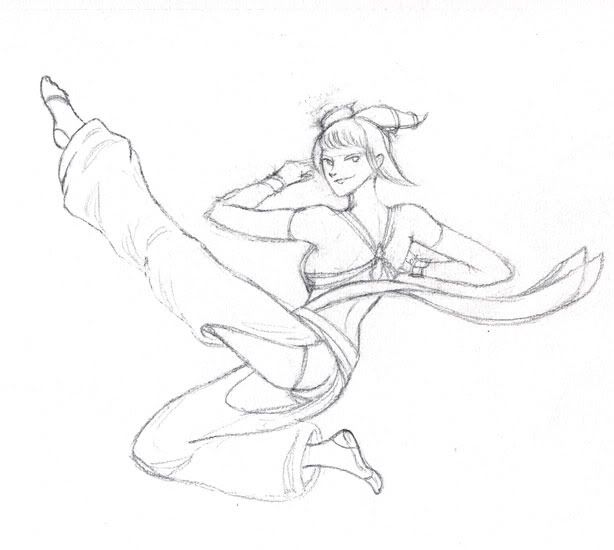
Sketched out again.
Wait, pencils now? What’s going on here?

Sketched out again.
One from a series of images.
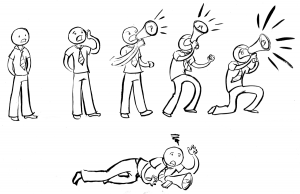
This morning I was hurrying to my bus stop via a narrow alley when I was quite shocked to realise there was something very big and very black sitting on the fence next to me. A huge, fluffed up crow.
But maybe it wasn’t that huge, maybe it just seemed that way because it was above me, or because it was all fluffed up. At work today I drafted the below two pictures, playing with two different view points.
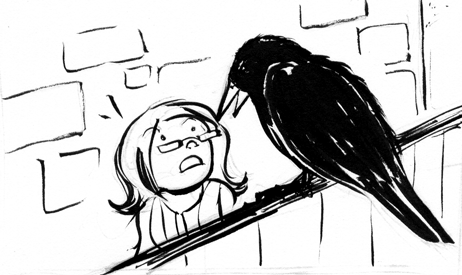
Gah!
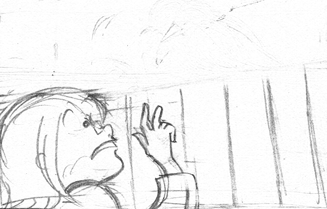
"Oh, hi"
I didn’t have time to finish the second one before my lunch break ended, but I also thought I could handle a lower view better. So I redid it when I finished work.
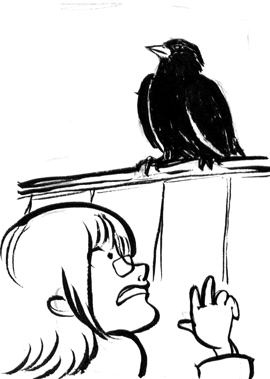
Revised and inked.
I think I like the expression in the first one a bit better. I also lost the shape of the bird when I inked it (It was a bit sleeker and I kinda wanted it to hint at the silhouette of a falcon because at one point when I looked at the crow I thought it was a member of the falco family!)
The damn bird was at my bus stop again when I got home this evening. It flew around lazily, taunting me as I scurried to my car…
Maybe this will become a fully fledged picture?
The goal here was to have some interesting action with the character but to not lead the viewer’s eye ‘out’ of the image, rather, have their eye land back in the focal points of the image.
To be honest, I like the way that outstretched leg looks… even though it leads the eye out of the picture frame. I had experimented with tipping her toes to bring the flow of the image back towards the middle but that made the foot look a little odd. So, forcing the viewer’s eye back onto the image might not be the right approach. What do you think?
Pretty much complete, will probably do some tweaking and fix up the foliage on the side.
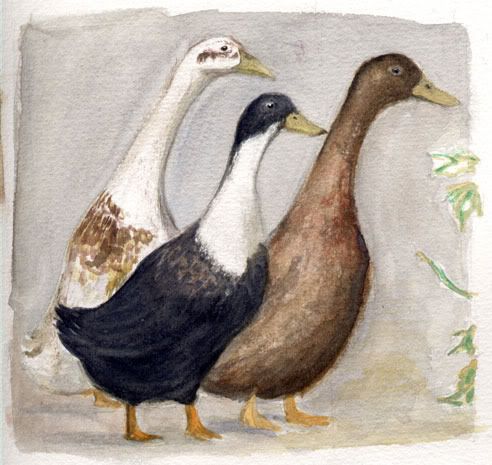
Quack!
Character development and design:
EDIT: Very first draft added.

"Huh?"

Basic colour decisions - lots of pink!
I wanted to make her a blonde bimbo but apparently being cliche is dull.

Lots of charm, not so much going on upstairs...
Missing one image here actually, I’ll edit it in later if I can find it.
A quickish sketch done on my very speccy new toy.

Whee!
Drawing faces from low angles is tricky – in some ways the cartoon style amplifies the trickiness because direct photo reference isn’t as useful. Also I did kind of change gears halfway through so the face styles are different.
I really like her foot on the right… but I ruined it when I connected it to her leg. A few hits and misses throughout this picture – all part of a learning experience.
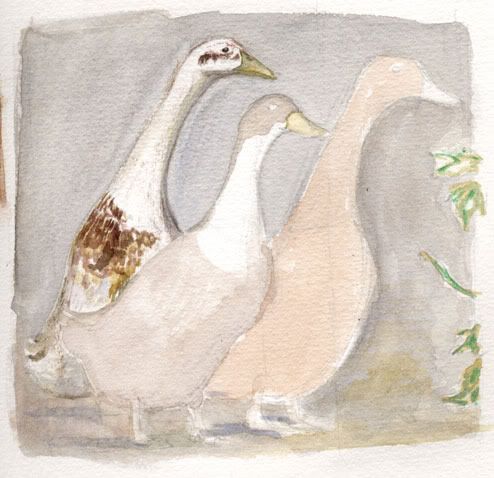
Ducks in Progress
Trying out some new watercolour paper – Rains by Montval, I think it was…
Reference found via Google Image Search.
Despite the title, this is a post to announce I’m going to attempt to update more frequently.
Committing myself to a long pretentious post to blab about my mostly mediocre art often feels too troublesome to feel worth posting at all. So hey, I’ll just stick up WIP stuff and scraps without any explanations! Whoo.
Feel free to comment and ask stuff, readers. I mean, Tom. Maybe now I’ll only blab on about things you want to know about.

The cliffs and skies - I practise these often
Started drawing a few of these last year, have continued at a slower pace this year. As you can see, I’ve started with the obvious: Eeveelutions, a bunch of starters (Cyndaquil and Totodile to come), Pikachu and Meowth, and uh, a duck. I like ducks, okay?
I’m hoping to print these off as fridge magnets. As soon as I can fill a page of them. (For reference, these are currently filling about a third to a half of an A4 page). They’re going to be totally rad and will stick to your fridge.
Each critter is inked digitally, then the lineart is enlarged by running it through a bitmap-to-vector converter. Some simple colours are thrown on, and voila! It’s done.
Since I’m planning to do more, I’d love to hear suggestions of which other Pokémon I should try. Let me know in the comments!